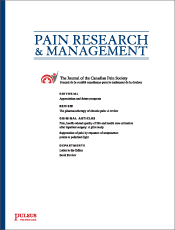
ARTHROPLASTY
Intrathecal morphine, added to spinal anaesthesia in TKA, offers better analgesia than fentanyl
Pain Res Manag. 2016;2016:325658350 patients scheduled for total knee arthroplasty under spinal anaesthesia were randomized to either intrathecal morphine or intrathecal fentanyl to be added to bupivacaine for spinal anaesthesia. Regarding postoperative pain, VAS pain scores were significantly lower throughout follow-up from 2-24 hours in the morphine group compared to the fentanyl group, and the morphine group demonstrated a significantly longer time to first rescue analgesia request when compared to the fentanyl group. No significant differences between groups were observed in the incidence of PONV.
Unlock the full ACE Report
You have access to {0} free articles per month.Click below to unlock and view this {1}
Unlock NowCritical appraisals of the latest, high-impact randomized controlled trials and systematic reviews in orthopaedics
Access to OrthoEvidence podcast content, including collaborations with the Journal of Bone and Joint Surgery, interviews with internationally recognized surgeons, and roundtable discussions on orthopaedic news and topics
Subscription to The Pulse, a twice-weekly evidence-based newsletter designed to help you make better clinical decisions
Exclusive access to original content articles, including in-house systematic reviews, and articles on health research methods and hot orthopaedic topics
Or upgrade today and gain access to all OrthoEvidence content for just $1.99 per week.
Already have an account? Log in


Subscribe to "The Pulse"
Evidence-Based Orthopaedics direct to your inbox.
{0} of {1} free articles
Become an OrthoEvidence Premium Member. Expand your perspective with high-quality evidence.
Upgrade Now












































































